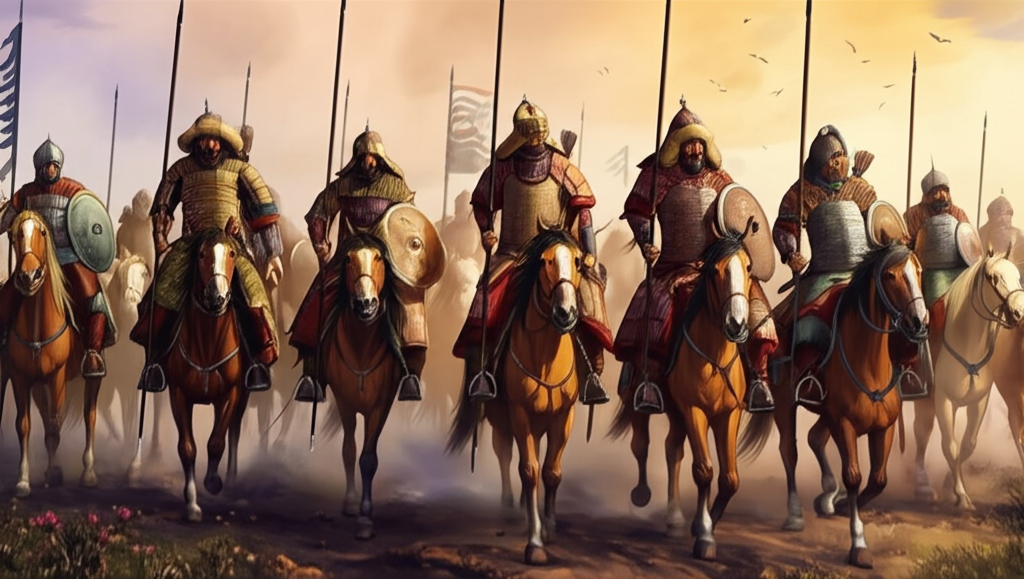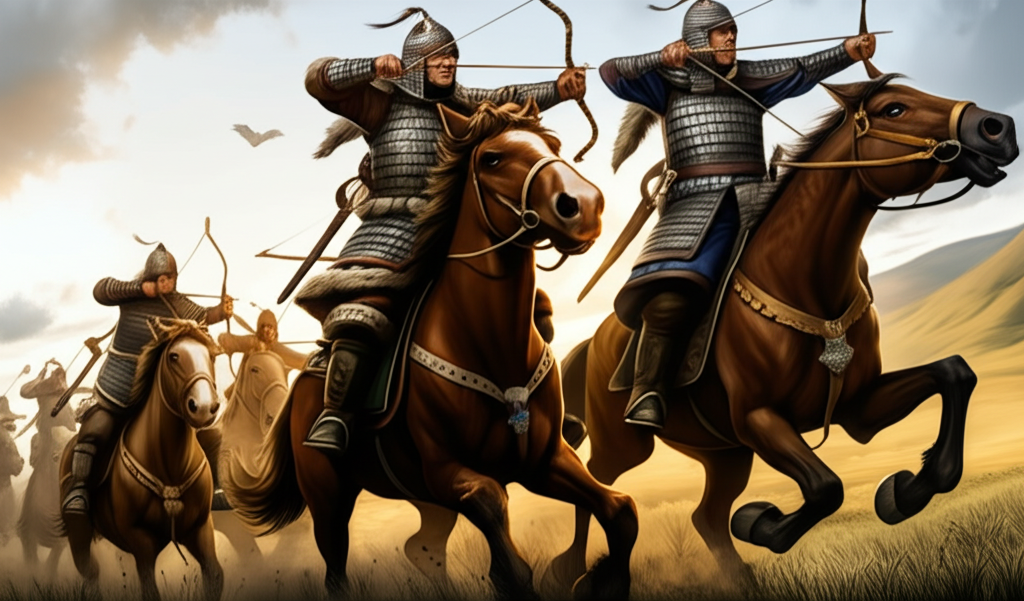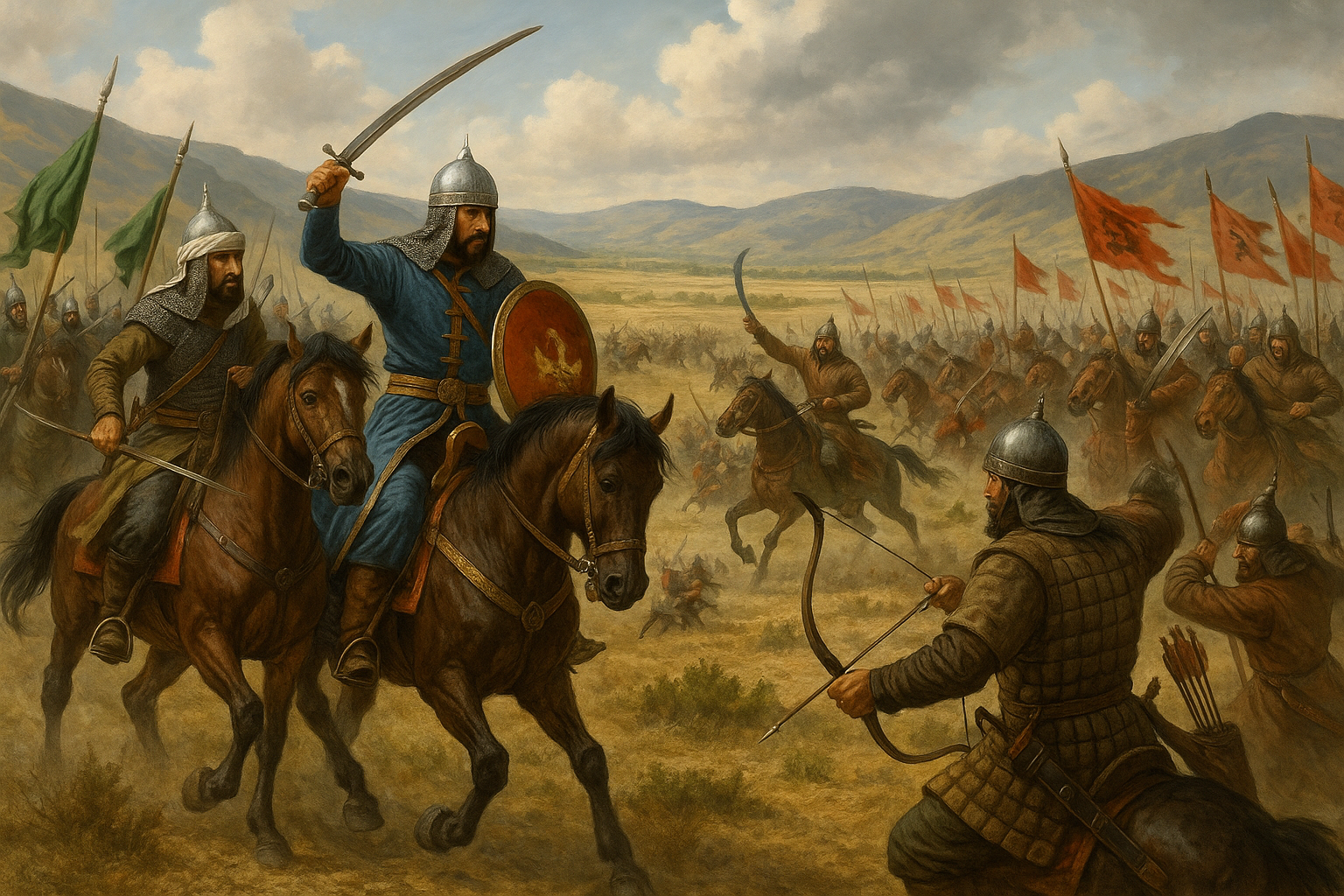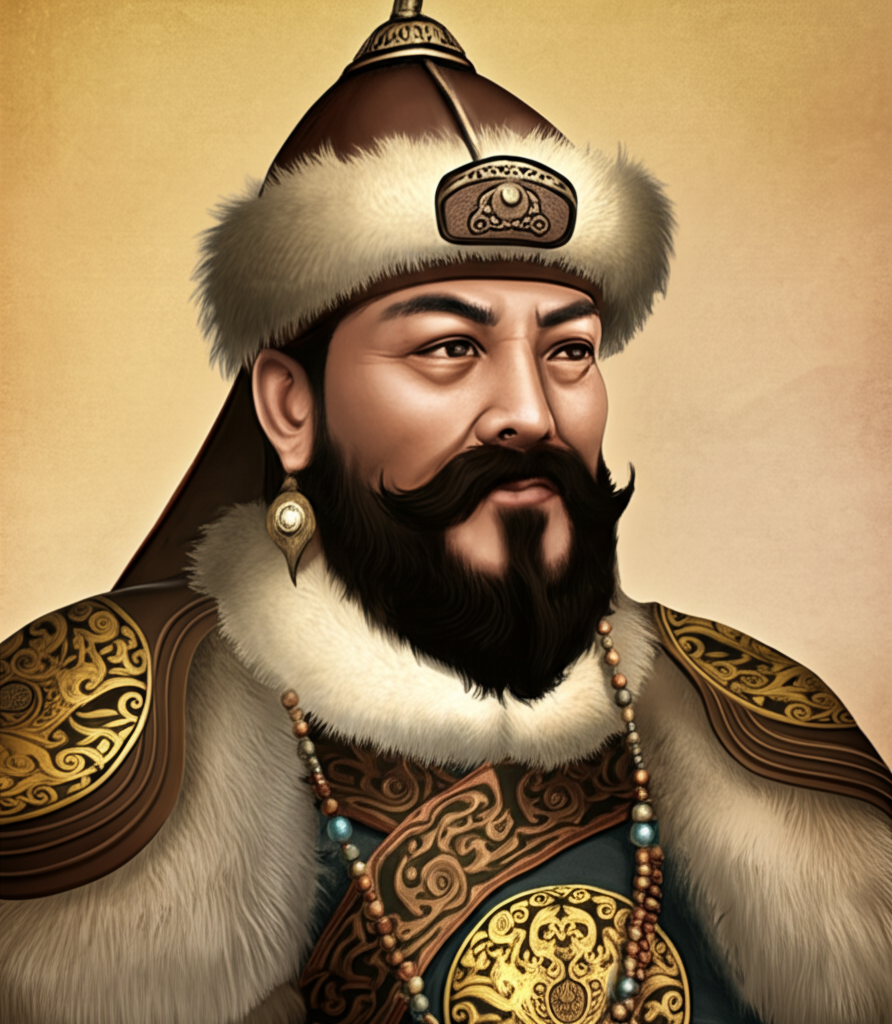


The 13th century saw the pagan Mongol hordes sweep across the Eurasian continent, establishing one of the largest land empires ever known. The heartlands of Islam, the mainland of China, and the northern steppes as far as Russia and Hungary were all brought under Mongol rule within a few decades.
Temuchin was born into a chiefly family but faced a difficult childhood after being orphaned. He rose to prominence as a respected warrior and led his clan to victories against rival tribes on the Steppe. By 1206, he had united the Mongol tribes and became the undisputed ruler, calling himself Chingiz Khan.
The Mongols were super-tough warriors. Their whole life on the harsh environment of the Steppe conditioned them to be strong and hardy. They practically lived on their horses, and they had the unique ability to accurately fire arrows while in full gallop. These skills of horsemanship and mounted archery gave them a great advantage over many of their enemies.

The Chinese had long recognised the potential threat from the Steppe dwellers. Chinese imperial policy had been to implant agents, and to try and manipulate the steppe tribes to remain divided and keep fighting amongst themselves. That way they were unlikely to pose a serious threat to the Chinese people.
Now that they were united, the Mongols formulated their plans for conquest, and they began with the land they had always coveted: China.
At first, Chingiz Khan had no intention to attack the Muslim world. However, when the ruler of neighbouring Empire of Khawarizm dishonored peaceful envoys sent by the Mongols, Chingiz Khan was enraged and prepared his forces to move against the Muslims.
The devastation was immense. The Mongolian expansion to the west proceeded in three phases, until most of the Eurasian continent was under their rule.
In the First Phase (1219-22) the Empire of Khawarizm was overrun, despite the superior numbers of the Muslims. Cities that resisted the Mongol advance were treated without mercy and often all their inhabitants were put to the sword. City after city fell to Chingiz’s armies, with horrific massacres often numbering hundreds of thousands. Many believed that the Last Days had arrived.
Chingiz Khan died in 1227, leaving his empire in the hands of his four sons, with Ogedei as the supreme ruler.
Chingiz’s grandson, Batu, initiated the Second Phase of conquest, penetrating deep into present-day Russia and Eastern Europe. The heavily armored Christian knights were no match for the mounted archery of the Mongol armies.
The Third Phase began in 1256 when the new Great Khan, Mongke, led his armies to complete the conquest of China. Simultaneously, his brother, Hulegu Khan, launched campaigns against the Muslim world, capturing major territories and sacking Baghdad in 1258, thus bringing a final end to the Abbasid caliphate.
Just when it seemed that the Mongol advance was unstoppable, the Muslim world had fallen into despair and hope was almost lost, the Mamluks of Egypt emerged to face the advancing armies of the Great Khan. The forces met at the oasis of Ayn Jalut in Palestine, where the Mongols were defeated for the first time, halting their advance into Muslim lands.

With the death of Great Khan Mongke, the Mongol domain split into four great empires. A significant part of the Muslim world remained under non-Muslim Mongol rule for two generations.
Eventually, the conquerors embraced the religion of the conquered. And the Mongols, formerly the nemesis of the Muslims, became some of the greatest defenders of the Islamic faith.

Conquering the great city of Bukhara, Chingiz Khan is reported to have proclaimed, “O people, know that you have committed great sins and the great ones among you have committed these sins... because I am the punishment of God. If you had not committed these sins, God would not have sent a punishment like me upon you”.
When the Mongol armies entered the Abbasid capital, Baghdad, they captured the Caliph alMusta’sim, rolled him up in a carpet and had him trampled to death by horses. Sounds brutal? Actually it was their way of honoring the Caliph! Mongols believed that shedding of blood was a dishonourable way to die - being trampled avoided blood being shed!